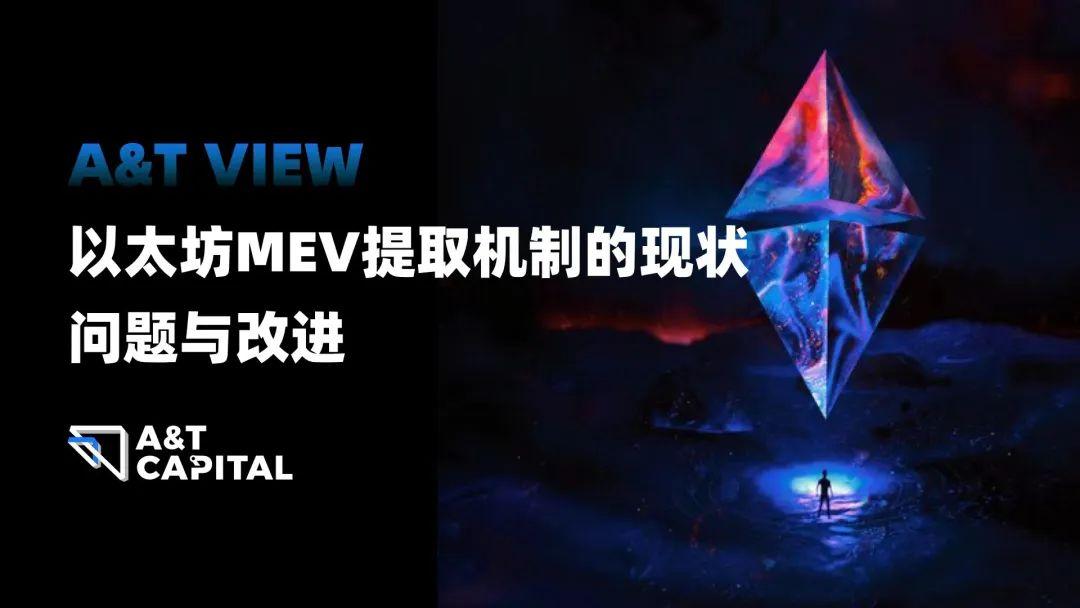What investment opportunities are there in the extractable value of Ethereum staking?
Author: Liam, A&T Capital
TL; DR:
In terms of source, ETH Staking Extractable Value can be divided into three categories: Consensus Income, Execution Income, and MEV; in terms of flow, ETH Staking Extractable Value can be divided into Validator Captured Value (Validator Staking Income) and Validator Uncaptured Value.
Validator Infra Providers, Pooled Staking Protocols, CEXs, and Stakers can share a portion of the Validator Staking Income; Searchers and Block Builders can share a portion of the Validator Uncaptured Value.
There are noteworthy investment opportunities in Validator Infra Providers, Stake Pools, Products based on DVT, and External MEV Markets.
Since The Merge, Ethereum under the PoS consensus mechanism has been operating robustly for nearly three months, marking a key first step for ETH 2.0.
What opportunities does this shift in consensus mechanism bring?
If you want to understand the full picture of the ETH Staking Ecosystem, it is recommended to read the detailed report from Staking Rewards (A&T Capital Portfolio). https://newsletter.stakingrewards.com/p/mapping-the-ethereum-staking-ecosystem, "Mapping the Ethereum Staking Ecosystem"

Let’s focus on the direct stakeholders of ETH Staking Extractable Value, simplifying the above image to obtain the ETH Staking Extractable Value Chain.

How is Staking Extractable Value constituted?
Two perspectives:
Staking Extractable Value = Consensus Income + Execution Income + MEV
Staking Extractable Value = Validator Captured Value + Validator Uncaptured Value
From the source, it can be divided into three categories:
Consensus Income: Comes from newly issued ETH Tokens by the network, serving as rewards for honest Validators from the consensus mechanism.
Execution Income: Comes from the Tip portion of Gas Fees, which is the tip paid by users to Proposers/Builders who help package their transactions on-chain.
MEV: Comes from the economic benefits generated by executing certain specific transactions, taking various forms, mostly belonging to arbitrage profits.
From the flow, it can be divided into two categories:
Validator Captured Value (Validator Staking Income): Allocated to Validators as economic incentives for maintaining the security of the ETH network and participating in block creation and consensus.
Validator Uncaptured Value: Divided among other participants in the External MEV Market, represented as MEV plus External Block's Execution Income minus the MEV Rewards given to Validators.
How is Validator Captured Value (Validator Staking Income) constituted?
Validator Staking Income = Consensus Income + Local Block's Execution Income + MEV Rewards
Validator Staking Income has three different sources: Consensus Income, Local Block's Execution Income, and MEV Rewards.
For a Validator, Consensus Income is the most basic and stable income; Local Block's Execution Income and MEV Rewards are relatively incidental and can only be obtained when the Validator is selected as the Proposer for a new block.
The specific income obtained by the Proposer depends on different situations. In the case of Local Block Building, the Proposer receives Execution Income; in the case of External Block Building, the Block Builder receives Execution Income, and the Proposer receives the MEV Rewards paid by the Block Builder.

- Consensus Income: Comes from newly issued ETH Tokens by the network, serving as rewards for honest Validators, which can be subdivided into three categories:
Proposer rewards: When a Validator is selected as a Proposer, if the new block it proposes reaches network consensus, it will receive Proposer rewards for contributing the correct new block to the network.
Attestor rewards: Validators not selected as Proposers can verify whether the new block proposed by the Proposer is erroneous, and participating Validators can receive Attestor rewards.
Whistleblower rewards: If the block proposed by the Proposer contains evidence that proves other Validators have violated consensus rules, it will receive Whistleblower rewards.
Local Block's Execution Income: Comes from the Tip portion of Gas Fees, which is the tip paid by users to Proposers/Builders who help package their transactions on-chain. In the case of Local Block Building, the Proposer (Validator) builds the block themselves and can receive all the Tips from that block, which is referred to as Local Block's Execution Income.
MEV Rewards: Comes from the fees paid to the Proposer by the Block Builder, essentially a part of MEV. In the case of External Block Building, the Proposer (Validator) proposes the block built by the Block Builder, and the fees paid to the Proposer by the Block Builder are referred to as MEV Rewards (the Block Builder receives the Execution Income from that block). This fee may be higher than the total Tips in the block (the Block Builder subsidizes the Proposer), or it may be equal to or lower than the total Tips in the block (the Block Builder retains zero or partial profits).
Note: After EIP-1559, the Gas Fee for each transaction on ETH is divided into Base Fee and Tip. The Base Fee is burned, while the Tip is paid to the coinbase address within the block (this address can be either the Proposer's or the Block Builder's).
It is worth mentioning that currently, Consensus Income cannot be extracted; it is locked in the Validator's Balance on the Beacon Chain, while Execution Income and MEV Rewards can be extracted as they are transferred to a designated account.
How is Validator Uncaptured Value constituted?
Validator Uncaptured Value = MEV + External Block's Execution Income - MEV Rewards
MEV: Comes from the economic benefits generated by executing certain specific transactions, taking various forms, mostly belonging to arbitrage profits.
External Block's Execution Income: Comes from the Tip portion in Gas Fees, which is the tip paid by users to Builders who help package their transactions on-chain. In the case of External Block Building, the Builder sets the coinbase address (the address for receiving tips) in the block they build to their own address, allowing the Builder to receive all the Tips from that block.
MEV Rewards: Comes from the fees paid to the Proposer by the Block Builder, which is the portion of MEV captured by the Proposer.
Who can share a portion of Staking Extractable Value?
Regarding Validator Captured Value:
Discussed based on how Stakers choose to stake. According to Ethereum's official statement, it can be divided into the following four categories:
Solo Staking: Staker - 100%
Staking as a Service: Staker - 90~95%, Validator Infra Provider - 5~10%
Pooled Staking: Staker - 90%, Pooled Staking Protocol - 5%, Validator Infra Provider - 5%
Centralized Exchanges: Staker - 85~95%, CEX - 0~10%, Validator Infra Provider - 5%

Regarding Validator Uncaptured Value:
Currently, Validator Uncaptured Value is divided among Searchers and Block Builders, while Relays have not extracted value from it. Theoretically, a Relay is a trusted relay structure that acts as a market to match Block Builders and Proposers, with potential for commercialization.
External MEV Market Architectures:

Searcher:
Behavior: Inserts their MEV TXs into a set of TXs, forming Bundles to send to Builders.
Income: Profits from executing MEV TXs (MEV).
Costs: Gas fees for MEV TXs (Base fee + Tip) and fees paid to Builders.
Block Builder:
Behavior: Composes a Full Block based on the received Bundles and TXs in the Mem Pool, and sends it to the Proposer. The coinbase address in the Full Block (used to receive tips) is set to the Builder's address, while the last TX in the Full Block is a transfer from the Builder to the Proposer's address.
Income: Tips in the Full Block and fees paid by Searchers.
Costs: Fees paid to the Proposer.
Relay:
Behavior: Accepts Full Blocks sent by numerous Builders and sends the most favorable Full Block to the Proposer.
Income: Has not yet received any fees.
Costs: Server operation and maintenance costs.
What directions have noteworthy investment opportunities?
Validator Infra Provider
Stake Pool
Products based on DVT
External MEV Market
Validator Captured Value is the "value floating on the surface," and this market is relatively mature, with the proportion of value extraction by various stakeholders being relatively fixed.
The two most obvious investment directions are Validator Infra Provider and Stake Pool. A&T Capital has laid out in both areas.
Investment logic can refer to our previous articles:
A&T Family: Unicorn Company InfStones Completes New Round of $66 Million Financing
A&T Family: Liquid Staking Solution Meta Pool Completes Seed Round Financing
However, this is by no means a static market; the maturity and application of DVT (Distributed Validator Technology) will become a new "catalyst."
DVT allows Node Operators running on different hardware to jointly take on the responsibilities of a Validator, making Validators more decentralized while avoiding single points of hardware failure.
Based on DVT, various forms of products can be realized and commercialized through different paths. SSV Network and Obol Network are excellent examples.
SSV Network aims to establish a public market that matches Stakers with Node Operators, allowing Stakers to select different Node Operators while operating a Validator for them to prevent single points of failure; Node Operators also gain redundancy, enabling them to respond more flexibly to various emergencies.
Obol Network currently resembles a SaaS solution, catering to both B2C and B2B.
Validator Uncaptured Value is the "value hidden beneath the surface," and due to the involvement of the External MEV Market (Off-chain), it is not as transparent.
MEV is more important than imagined.
MEV arises from profits generated by executing certain special transactions, taking complex and varied forms. Theoretically, the more active on-chain transactions are, the higher the upper limit of MEV. Sometimes, MEV can exceed Consensus Income + Execution Income.
The total amount of MEV is difficult to measure (it is hard to say how much profit the execution of MEV TXs has brought). But it is almost certain that the total amount of MEV is greater than the MEV Rewards allocated to Validators.
 (https://www.rated.network/relays?network=mainnet)
(https://www.rated.network/relays?network=mainnet)
Since the Merge, the External MEV Market has allocated nearly 60,000 ETH in rewards to Validators, and the total amount of MEV will only be higher than this figure.
It is certain that the MEV-Boost system proposed by Flashbots has promoted the decentralization of Ethereum Validators. Every Validator can receive Blocks sent by various Relays through the MEV-Boost client and select the optimal one, without needing to rely on a large staking pool to obtain higher income.
However, the current market still has a series of urgent issues that need to be addressed:
There are many structures in the market that need to be trusted, posing censorship risks.
There is a trend of centralization among Block Builders and Relays.
In the External MEV Market, Searchers need to trust Builders, and Builders need to trust Relays. In reality, Builders have the ability to censor Searchers' Bundles, and Relays have the ability to censor Builders' Blocks.
For example, Flashbots Relay no longer submits blocks containing Tornado Cash transactions.

Needing to trust a single entity is already bad enough; it is worse that the trusted entities are becoming increasingly centralized.

Data from Relayscan.io shows that in the past week, the top five Relays accounted for over 95% of the market share, while the top five Builders accounted for over 85% of the market share.

It is worth mentioning that some Builders, to ensure that the blocks they build win, even subsidize Proposers (the fees paid by Builders to Proposers exceed the Tips received in the coinbase address). The possible reason for this phenomenon is that Builders are also Searchers, able to profit from the execution of special transactions.
There are investment opportunities in the External MEV Market.
A market that requires trust and is centralized is not what we want to see. Commercial solutions that can optimize the External MEV Market will be noteworthy investment opportunities.










